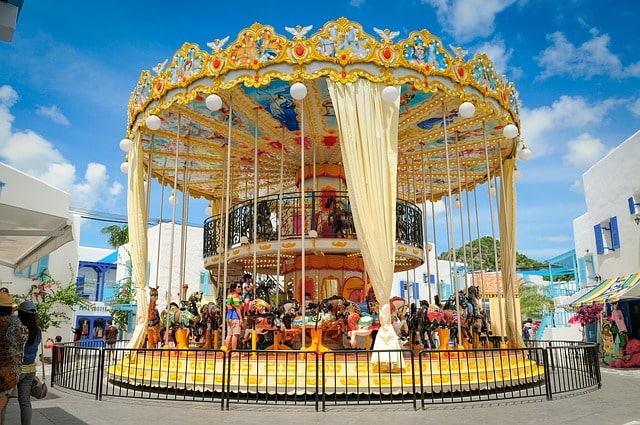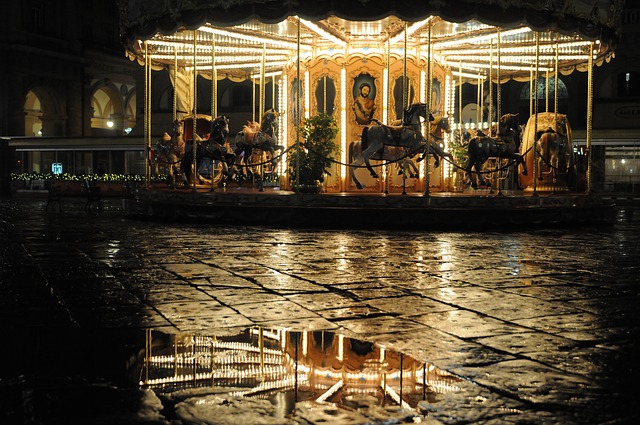
The carousel amuses children with its rotating movement
The idea of merry-go-round is used in several South American countries to refer to a merry-go-round or carousel : a recreational attraction that rotates thanks to a rotating platform .
Children's hobby
The merry-go-round is a children's pastime that is usually present at fairs and parks . Its structure has seats that are usually shaped like animals or vehicles : children, in this way, sit in these places while the carousel rotates.
It should be noted that the seats of some buggies move up and down . In this way, the vertical displacement of the seats is simultaneously added to the rotation of the merry-go-round. This is not usually the case for all seats, partly for the safety of younger children, who do not have sufficient motor development or height to hold on to the pipes.
It is common that, as part of their operation, the carousels have music . It is even common for the same melody to be repeated constantly. Depending on the carousel in question and also the time, the music could be typical of the attraction or a series of popular songs of the moment. In the first case, one of its main characteristics is that it generates the sensation of an infinite loop, of repetition, so that it complements perfectly with the movement.
Mirrors are also common elements of carousels. They are usually placed in the central cylinder, so that the children can see themselves reflected as they spin, with the landscape passing behind them. It is part of the illusion that this peculiar attraction generates . At night everything is transformed thanks to the colored lights, typical of the merry-go-round, which we can find both on the outside (to draw the attention of the public and attract them) and inside.
Curious facts
It is interesting to note that in nations such as Argentina , Mexico and the United States, the carousels rotate counterclockwise. In Europe , however, they usually rotate clockwise.
In Argentine territory, the owner or person responsible for the carousel is known as a calesitero . This person, while the merry-go-round spins, waves the ring (a metallic object that gives the child who manages to take it an extra spin for free).
For most children who enjoy the merry-go-round, the ring is its main objective, because it encourages them to move actively instead of standing still while the merry-go-round spins, with the purpose of obtaining a free pass . It is a real challenge that, especially in the golden age of this attraction that is being lost, was part of the magical atmosphere of children's parks.
History
The origins of the carousels are in the military field . Similar mechanisms were used in the Byzantine Empire to train soldiers and for entertainment. The riders, in this context, practiced attacking the dolls that were going to appear with the turns .

The magical appearance of the carousel illuminated at night
The soldiers also had to use their spears with great skill, to make them pass through rings that were placed around the machine, which in its future version would become the rings. It is very curious that a children's attraction has a past focused on violence, but its evolution is still fascinating.
History indicates that the crusaders transferred the system to the European continent, always focusing on military training. At first, these horse-drawn carriages were part of the secret training strategy of the riders. Over time , the carriages began to be installed in the royal gardens, now oriented towards fun. One of the oldest was built in Paris, larger than the military ones.
